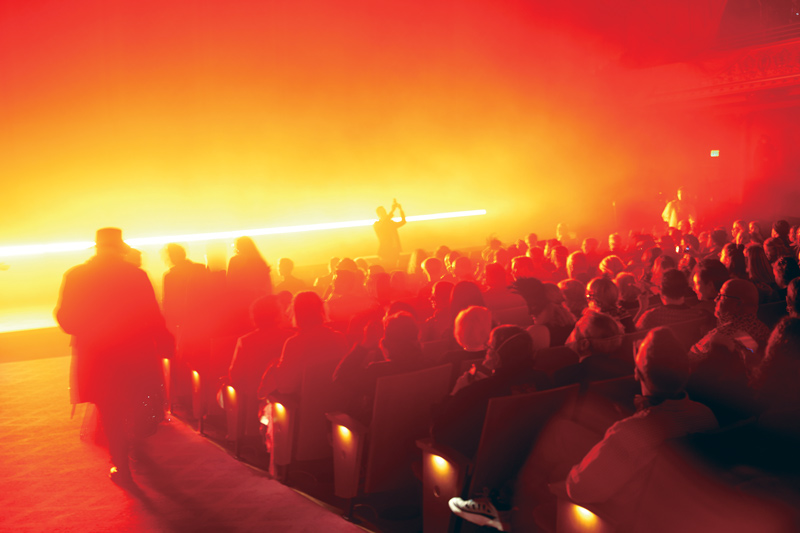Inside the Orchestra: The Ever-Changing Concert Experience

“Inside the Orchestra” seeks to demystify the many routines or rituals that are often part of any orchestra concert. From the modern perspective, these routines seem fixed, but historical context demonstrates that the typical “orchestra concert” has rapidly and significantly changed.
by Tyler M. Secor
There is an iconic scene in Sister Act (1992) where Sister Mary Clarence (Whoopi Goldberg) helps Sister Mary Robert (Wendy Makkena) find her voice. After Mary Robert’s first weak attempt to sing an “a,” Mary Clarence says, “close your eyes. Visualize yourself in a room full of people, lots of silverware, people dropping stuff, talking loud, drunks, women with trays going ‘what are you gonna have?’ Your voice has to carry over the din.”
Of course, Mary Clarence was describing a common experience from her job as a nightclub singer, but that description could easily describe a classical music concert in 18th century Europe.
For example, in his book Listening in Paris James Johnson sets the scene for a standard 1750 concert at the Paris Opéra:
While most were in their places by the end of the first act, the continuous movement and low din of conversation never really stopped. Lackeys and young bachelors milled about in the crowded and often boisterous parterre, the floor-level pit to which only men were admitted. Princes of the blood and dukes visited among themselves in the highly visible first-row boxes. Worldly abbés chatted happily with ladies in jewels on the second level, occasionally earning indecent shouts from the parterre when their conversation turned too cordial. And lovers sought the dim heights of the third balcony — the paradise — away from the probing lorgnettes. Forty soldiers with loaded muskets roamed the pit and patrolled each floor, ensuring, in the words of an edict from Versailles, “the order due a Royal House.”
Johnson goes on to say, “few complained about the noise and bustle.… In fact, eighteenth-century audiences considered music little more than an agreeable ornament to a magnificent spectacle, in which they themselves played the principal part.” A young nobleman is even quoted as saying, “there is nothing so damnable as listening to a work like a street merchant or some provincial just off the boat.”
Mary Sue Morrow, former Professor of Musicology at the University of Cincinnati College-Conservatory of Music, wrote, “the degree of attention paid to the music at both public and private performances varied widely, with conversation, cards, flirtation, clattering teacups, and the like often competing with the music.”
As Alex Ross explains in “Why So Serious” (The New Yorker):
Public concerts didn’t become widespread until after 1800, and well into the nineteenth century they took the form of “miscellanies” — eclectic affairs at which all kinds of music were played before audiences that seldom sat still or quieted down. Movements of symphonies and concertos were mingled with solo-piano pieces, songs and arias, dances and other lighter items. Applause usually erupted after movements, and at times during them, if the audience heard something it particularly liked.
The types of concert experiences described above are not uncommon in today’s world. But in the arena of orchestra music, the silent, almost sacred rite-like concert experience is the dominate template. This modern understanding of the orchestra concert emerged in the 1950s, which, in the context of classical music history, is a recent development.
However, the concert experience is ever evolving. From the multi-media arena shows of Taylor Swift and the 360-degree immersive experience of The Sphere in Las Vegas to livestream concerts, VR concerts and CSO Proof, concert experiences that meet a 21st century audience’s needs have emerged.
The next concert experience is yet to be created, but the final words of Alex Ross’ 2010 lecture at the Royal Philharmonic Society, titled “Hold Your Applause: Inventing and Reinventing the Classical Concert,” are apropos.
I dream of the concert hall becoming a more vital, unpredictable environment, fully in thrall to the composers who mapped our musical landscapes and the performers who populate them.… What if a rock band wants to make us think and a composer wants to make us dance? Music should be a place where our expectations are shattered.